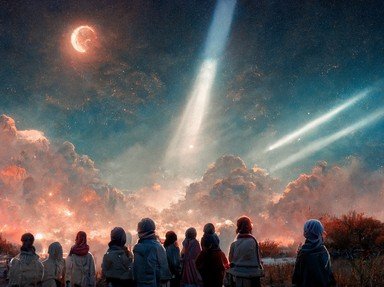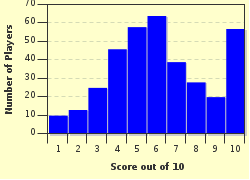Quiz Answer Key and Fun Facts
1. Christopher Columbus (Latin: Christophorus Columbus, Spanish: Cristóbal Colón) is generally believed to have born around 1452 in which Italian city?
2. After a shipwreck in 1476, Columbus settled in Portugal, and became convinced that it should be possible to reach the Indies by sailing west. In 1485, he brought the plan to King João II of Portugal, who after consulting experts rejected it. What was the reason these experts advised against Columbus's plans?
3. In 1488, Columbus took his plans to the Spanish court. At first he was rejected here too, but in 1492 they gave him permission to go ahead with his plans. Part of the reason is probably that 1492 was a year of celebration for the Spanish. What was the reason for these festivities?
4. On August 3, 1492, Columbus left from the southern Spanish harbour of Palos. How many of these ships crossed the Atlantic (including his flagship)?
5. On October 12, Columbus's expedition saw land in the Americas, on one of the islands of the Bahamas. The local population called their island Guanahani, but what name did Columbus give the island?
6. Later on his first voyage, Columbus erected a small colony in the new world, called La Navidad. On which island or piece of land was this colony erected?
7. On his second voyage Columbus chose a more southerly route to the Americas. He first saw land at the island of Dominica. Which of the following islands was NOT discovered on this voyage?
8. On his third voyage in 1498, Columbus discovered the mainland of South America. How did he realize that what he discovered was not just another island, but actually a new, unknown continent?
9. In 1500 Columbus was sent back to Spain as a prisoner. He soon was set free again, kept his titles, but was relieved of his rights and duties. In 1502 he got permission to make his fourth and last voyage to the Americas. What area did he explore on this voyage?
10. Until the end of his life (in 1506 in Valladolid), Columbus remained convinced that what he had discovered was East Asia. The letters of another explorer however had been published and convinced many people that what lay at the other side of the ocean was actually a New World. Who was this other explorer?
Source: Author
engels
This quiz was reviewed by FunTrivia editor
Snowman before going online.
Any errors found in FunTrivia content are routinely corrected through our feedback system.

